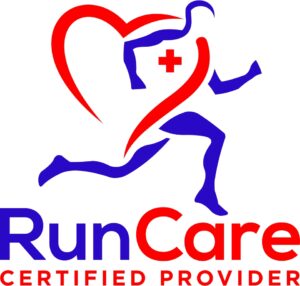
Introduction
Welcome to another illuminating blog post from WildHawk Physical Therapy. In this in-depth exploration, we’ll delve into the realm of manual therapy and its profound impact on physical rehabilitation. While exercise is undeniably a cornerstone of physical therapy, the art and science of manual therapy play a pivotal role in enhancing outcomes, promoting healing, and restoring optimal function. Let’s embark on a journey to unravel why manual therapy matters and how it complements and extends the benefits of exercise in the realm of physical rehabilitation.
The Essence of Manual Therapy
Manual therapy encompasses a range of hands-on techniques performed by skilled physical therapists to assess, diagnose, and treat musculoskeletal pain and dysfunction. Unlike exercise-focused interventions, manual therapy involves direct interaction with the affected tissues, joints, and muscles, aiming to restore mobility, alleviate pain, and improve overall function.
Understanding the Role of Exercise in Physical Therapy
Exercise is a fundamental component of physical therapy, contributing to strength building, flexibility improvement, and overall functional enhancement. Tailored exercise programs are designed to address specific musculoskeletal issues, promoting the activation of muscles, joint stability, and overall physical fitness. While exercise is instrumental in rehabilitation, it may not be the sole solution for every condition, and this is where manual therapy takes center stage.
When juggling physical therapy and academics, write my biology paper task can feel overwhelming. Delegate the task to professional writers or academic services to prioritize your health and recovery. With assistance, you can maintain balance and focus on healing while staying on track with your studies.
The Synergy of Manual Therapy and Exercise
- Targeted Pain Relief: Manual therapy techniques, such as joint mobilization or soft tissue manipulation, can provide immediate relief from pain and discomfort. By addressing specific restrictions or tightness, manual therapy sets the stage for a more comfortable and effective exercise experience.
- Enhanced Joint Mobility: For individuals with joint restrictions or limited mobility, manual therapy serves as a catalyst for improved joint movement. By gently mobilizing or manipulating joints, physical therapists pave the way for more effective exercise engagement, ensuring that the body can move through its full range of motion.
- Muscle Relaxation and Lengthening: Manual therapy techniques, including massage or myofascial release, can target muscle tightness and spasms. This not only reduces pain but also facilitates a more responsive and efficient response to therapeutic exercises, enabling better muscle engagement.
- Improved Blood Circulation: Certain manual therapy techniques promote increased blood circulation to the affected areas. Improved blood flow not only accelerates the healing process but also prepares the muscles and joints for subsequent exercises, optimizing their effectiveness.
- Neuromuscular Re-Education: Manual therapy can play a role in neuromuscular re-education, helping the nervous system adapt to changes in muscle length, joint position, and movement patterns. This synchronization is vital for executing exercises with proper form and precision.

Types of Manual Therapy Techniques
- Soft Tissue Mobilization: This involves hands-on manipulation of muscles, tendons, and connective tissues to alleviate muscle tension, improve flexibility, and enhance overall tissue health.
- Joint Mobilization: Skilled therapists use controlled movements to gently mobilize joints, addressing stiffness, promoting fluid movement, and restoring joint function.
- Myofascial Release: Focused on the fascia, a connective tissue that surrounds muscles, myofascial release aims to release tension and improve flexibility, contributing to a more effective exercise experience.
- Trigger Point Therapy: This technique targets specific points of muscle tightness or “knots,” releasing tension and promoting pain relief, allowing for better engagement in therapeutic exercises.
Clinical Scenarios Where Manual Therapy Shines
- Acute Pain Management: In cases of acute pain or inflammation, manual therapy techniques offer a gentler approach to initiate the healing process before progressing to more intense exercises.
- Post-Surgery Rehabilitation: Following surgery, manual therapy is often employed initially to manage pain, reduce swelling, and gradually reintroduce movement before incorporating more comprehensive exercise programs.
- Chronic Conditions: For individuals with chronic pain or conditions where movement is limited, manual therapy serves as an essential precursor to exercises, laying the groundwork for improved functionality over time.
- Complex Cases: In cases where a combination of joint restrictions, muscle imbalances, and movement dysfunctions coexist, manual therapy can unravel these complexities, providing a targeted and holistic approach to rehabilitation.
The Individualized Approach of Manual Therapy
One of the strengths of manual therapy lies in its individualized nature. Skilled therapists tailor their techniques to the unique needs, preferences, and responses of each patient. This personalized approach ensures that the manual therapy interventions align seamlessly with the individual’s overall rehabilitation plan, creating a synergy between hands-on techniques and therapeutic exercises.
FAQ Section
Frequently Asked Questions:
Q: Is manual therapy painful?
A: Manual therapy is generally not intended to cause pain. Skilled therapists communicate with patients to gauge comfort levels during treatment. While some techniques may elicit mild discomfort, they are performed within tolerable limits to promote healing and improved function.
Q: How long does it take to see results from manual therapy?
A: The timeline for experiencing results from manual therapy varies based on the individual’s condition, the severity of symptoms, and adherence to recommended exercises. Some individuals may experience immediate relief, while others may notice gradual improvements over several sessions.
Q: Can I receive manual therapy without incorporating exercise?
A: While manual therapy can provide temporary relief, its long-term benefits are often optimized when combined with therapeutic exercises. Exercise contributes to strengthening and stabilizing the affected areas, promoting sustained improvements in function and preventing reoccurrence of issues.
Q: Are there situations where manual therapy may not be recommended?
A: Certain medical conditions or contraindications may limit the use of specific manual therapy techniques. It’s crucial to communicate openly with your therapist about any pre-existing conditions, injuries, or concerns to ensure a safe and effective treatment plan.
Conclusion
In conclusion, the marriage of manual therapy and exercise forms a powerful alliance in the realm of physical rehabilitation. While exercise builds the foundation for strength and functionality, manual therapy provides a nuanced and targeted approach to address specific musculoskeletal challenges. The skilled hands of a physical therapist, guided by an understanding of individual needs, can unlock the door to pain relief, improved mobility, and enhanced overall well-being. As we navigate the intricacies of physical therapy, let us recognize the invaluable role that manual therapy plays in the journey toward optimal health and function. WildHawk Physical Therapy in Asheville, NC are the expert manual therapists if you’re looking for help.









